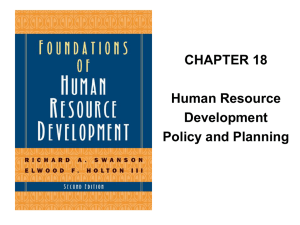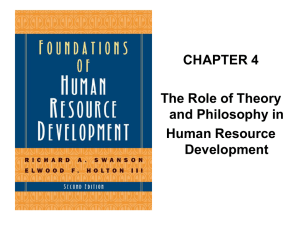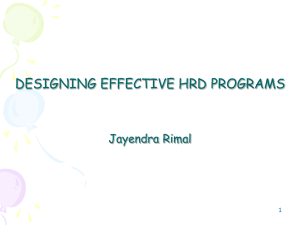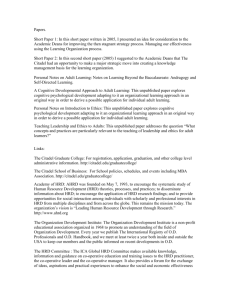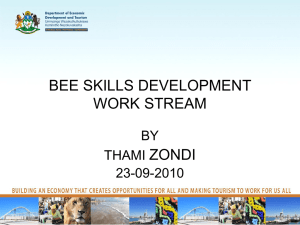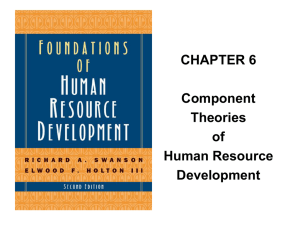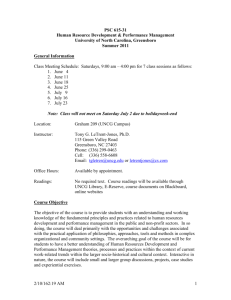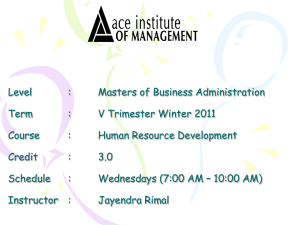Is HRD the future of andragogy?
advertisement
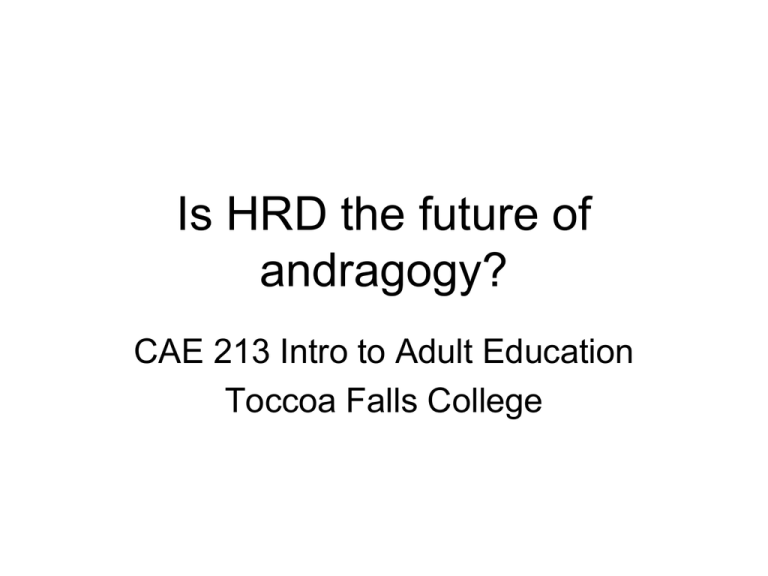
Is HRD the future of andragogy? CAE 213 Intro to Adult Education Toccoa Falls College Andragogy: AE or HRD? • The individual controls his or her own learning. Evaluation Need Assessment • The organization controls the worker’s learning. Learning Plan HRD • Human Resource Development, to be strategic and useful, must position itself as a strategic partner within the organizational structure; taking on the same level of importance as finance, production, and marketing. • Firms expect a return on the money invested in their employees. HRD • Human Resource Development in nonprofit organizations equips learners to contribute meaningfully to organizational goals that are essential for organizational survival. • HRD is first and foremost concerned with maintaining and/or improving performance at the organizational, process, and individual levels. What is the key difference? Evaluation Need Assessment Learning Plan • In AE, the learner controls his or her learning. • In HRD, the organization controls the learning. Need Assessment Evaluation HRD Learning Plan • When the individual’s needs are consistent with the organization’s needs, there is not tension. • When the organization’s and the individual’s needs are not congruent, the organization will require learning and a tension will exist between the individual learner and the organization. • Effective HRD professionals have the ability to find an optimum balance in each situation. Theoretical Foundations of Adult Learning • There are four phases: 1. Need assessment – determine what learning is needed. 2. Strategy creation – Create a strategy and recruit resources to achieve goals. 3. Implementation – Implement the learning strategy. 4. Evaluation – Assess the attainment of the goal and the process of reaching it. Need Assessment Evaluation AE Learning Plan • The determining of learner need tends to be reactive rather than strategic in AE. • Learning professionals are portrayed as reacting to the needs expressed by learners. This assumes that: • The learner is fully aware of his or her need. • The learner can accurately access specific need. • The learner will initiate learning. • The learner will maintain a commitment to learning. Need Assessment Evaluation AE ---- HRD Learning Plan Brookfield (1986) observes, “To take learners’ definitions of need as always determining appropriate practice is to cast the facilitator as a technician within the consumer mode. It is to remove from the facilitator all professional judgment and to turn him or her into a “knee-jerk” satisfier of consumer needs. Education becomes one giant department store in which facilitators are providers of whatever learning (consumers) believe will make them happy” (p. 97). Need Assessment Evaluation AE balances with HRD Learning Plan 1. Need – Engage learners to gain high motivation. Do not expect self-reporting of needs to be accurate for either the individual or the organization. 2. Create – Engage learners to gain higher validity in the selected learning strategies. 3. Implement – Engage learner to better mediate the actual learning. 4. Evaluate – Engage learners to gain higher selfreflection and integration of knowledge and expertise. The Future of Andragogy? • AE and HRD will continue to develop. • Control in AE will rest in the hands of the individual. The individual will seek to become literate, personally transformed, spiritually empowered, and socially emancipated. • Control in HRD will rest in the hands of the organization which will develop employees for organizational success. The Future of Andragogy? 1. The discipline needs a more clearly defined theory. [Page 4 is a good beginning.] 2. The discipline needs to develop clear measurements for key processes and elements. 3. The discipline needs empirically demonstrative case studies of techniques that produce better outcomes.
